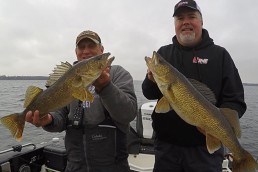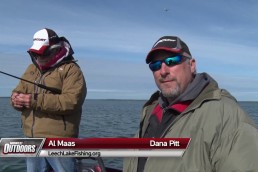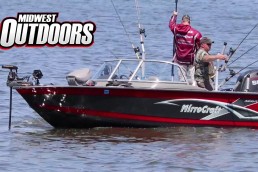What’s My Walleye Line?
SHARE THIS POST
Early spring is a great time to get equipment ready for the walleye season. And one good task to complete is the removal of fishing line from reels and re-spooling them with fresh line. With that task comes the question of spool choice.
With all the different kinds of lines on the market—monofilaments, copolymers, braided lines, fluorocarbons—it can get confusing as to which is best. In reality, no one line does it all when it comes to the various walleye techniques.
There are ways to alleviate some of the uncertainty in selecting the right line.
When using traditional jigging and live-bait rigging techniques, I’ve tried and have had success with all four major line categories. I’ve settled on using braided lines for most of my jig pitching and deep vertical-jigging presentations. Braid offers very little stretch and is sensitive, which I prefer when pitching a lighter jig to shallow walleyes. Also, the low-stretch properties of braid make it ideal for jigging with larger jigs in deeper water. Again, its sensitivity helps me detect deep-water bites, but the low-stretch qualities give me the hook-setting power needed to drive a hook into a fish’s mouth.
Are you enjoying this post?
You can be among the first to get the latest info on where to go, what to use and how to use it!
I prefer 10-pound-test XTCB-8 braid for jigging. This line is super-thin—same diameter as 2-pound-test monofilament line—yet is very strong and is Teflon-coated for longer casts. This line also comes in their new high-visibility Yellow, which is ideal for pitching light jigs to shallow walleyes, allowing me to easily monitor the line for any slight tick indicating a bite. Often, I tie in a few feet of copolymer line between the braid and jig to prevent the fish from seeing the bright line. And because the copolymer stretches some, it also gives me a bit of shock absorption on the hook-set.
Braids are my preference, but when slip-sinker live-bait rigging I use a hybrid style line called CX Premium, and use it in the 6-pound-test line. This is a copolymer line with a fluorocarbon coating and has the manageability of a copolymer, but has the lower visibility of a fluorocarbon line. The limpness and low memory is also great on a spinning reel while its lower visibility makes it perfect for subtly presenting leeches, ‘crawlers or minnows to wary walleyes. The line also has good sensitivity, helping me detect light walleye bites.
Copolymer line with fluorocarbon coating works well when rigging, but for bottom-bouncer presentations I often combine the two. When using a bottom bouncer I often use a braided line (20-pound-test XTCB-8 line) from the reel to the bouncer, and a copolymer line (10-pound-test CX Premium line) from the bouncer arm to the bait. This combination gives me great sensitivity—from the braid—for detecting bottom changes and biting walleyes while giving a leech or a nightcrawler a natural action and provides low-visibility.
Whether your favorite walleye technique is jigging, rigging or bottom bouncing, using the right line can make that method more successful.
MWO
SHARE THIS POST
Did you enjoy this post?
You can be among the first to get the latest info on where to go, what to use and how to use it!
Mike Frisch
Mike Frisch is a lifelong angler who has been guiding anglers in western Minnesota for nearly three decades. Mike co-hosts the popular Fishing the Midwest television series and co-founded School of Fish, a leading fishing education program. Learn more by visiting fishingthemidwest.com or following “Fishing the Midwest” on Facebook.



